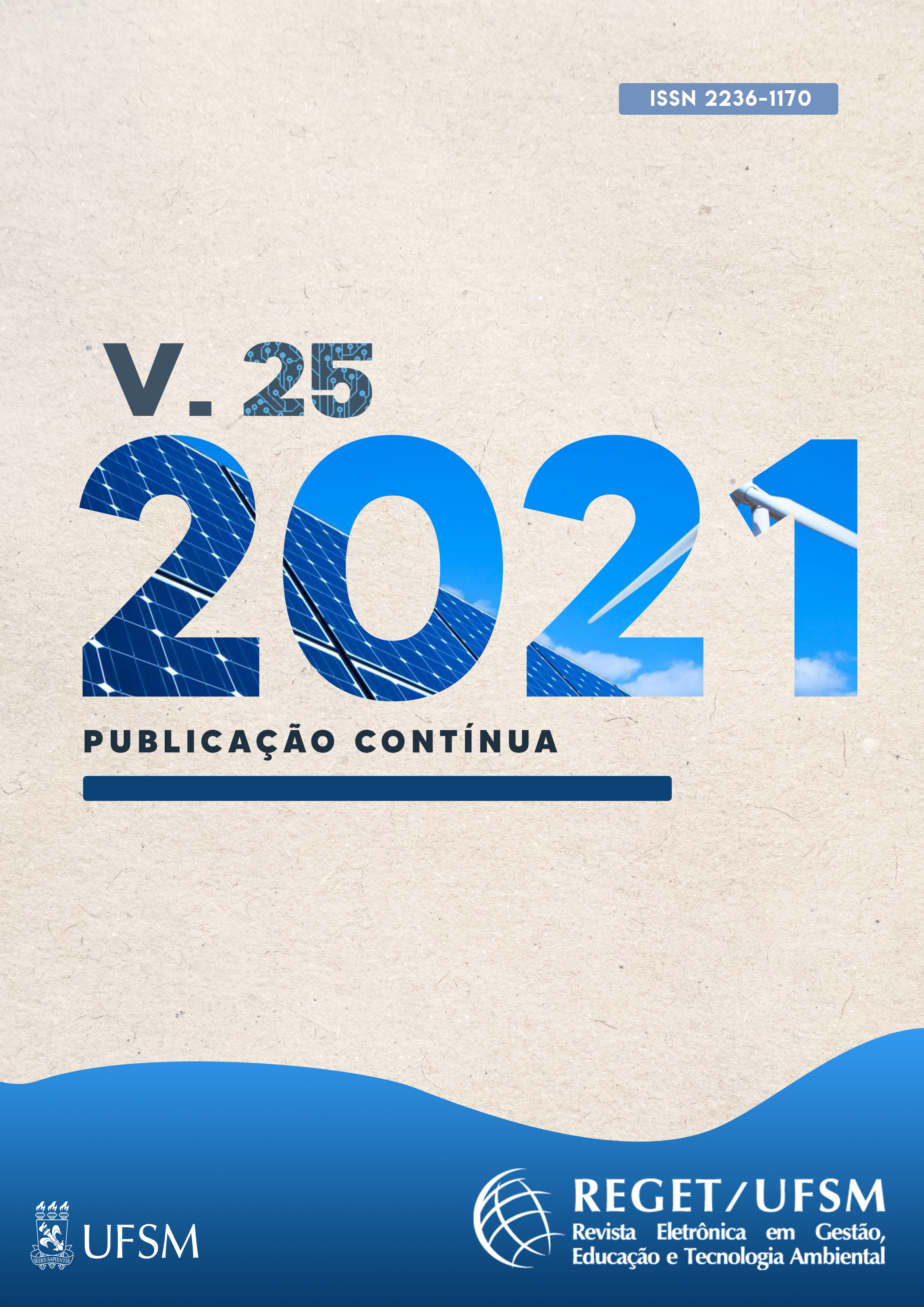Characterization and application of orange peel as an adsorbent for cationic dye removal from aqueous solution
DOI :
https://doi.org/10.5902/2236117065271Mots-clés :
Alternative biomass, Adsorption, Activated carbon, Dye, IsothermsRésumé
With the great generation of colored effluents, several methods for the removal of the color are used, being one of them the method of adsorption in solid medium. In this paper, the in natura orange peel was used as the alternative biomass for the adsorption process of methylene blue, which was characterized by moisture content, pH, apparent density, iodine number, and methylene blue index. To determine the adsorptive capacity of the methylene blue dye, pH 7 was obtained as favorable, the adsorption process showed an adsorption of 82% of the methylene blue dye and a 10 min equilibrium time, where the Freundlich isotherm presented a better adaptation to the adsorption process in orange peel, with its maximum adsorption capacity of 3.9630 mg g-1, for the methylene blue dye.Téléchargements
Références
ASSOCIAÇÃO BRASILEIRA DE NORMAS TÉCNICAS. MB-3410: Carvão ativado pulverizado – determinação do número de iodo. Rio de Janeiro, 1991. 4p.
ASSOCIAÇÃO BRASILEIRA DE NORMAS TÉCNICAS. MB-3414: Carvão ativado pulverizado – determinação da umidade. Rio de Janeiro, 1991. 2p.
ARAMI, M.; et al.Removal of Dyes from Colored Textile Wastewater by Orange Peel Adsorbent: Equilibrium and Kinetics Studies. Journal Colloid Interface Science, v. 288, p. 371-376, 2005.
BELTRAME, L. T. C. Caracterização de Efluente Têxtil e Proposta de Tratamento. 2000. 161 f. Dissertação (mestrado em Engenharia Química) - Universidade Federal do Rio Grande do Norte. Natal, 2000
FERRARI. L. D. F. Remoção De Corante De Efluentes Da Indústria Têxtil Utilizando Processos Com Membranas E Adsorção Em Bagaço De Laranja. 2009. 166 F. Tese (Doutorado Em Engenharia Química) – Universidade Estadual De Maringá, Maringá, 2009.
FRANCISCHETTI, J. Remoção de Metais Pesados em Efluentes Líquidos Através da Filtração Adsortiva. Florianópolis, 2004. 91f. Dissertação (Mestrado em Engenharia Química) – Universidade Federal de Santa Catarina.2004.
GUARATINI, C. C. I., ZANONI, M. V. B. “Corantes Têxteis”, Química Nova, v. 23, pp. 1-21. 2000.
NAMASIVAYAM, C., et al. Removal of Dyes from Aqueous Solutions by Cellulosic Waste Orange Peel. Bioresource Technology, v. 57, p. 37-43, 1996.
ROYER, B. Remoção De Corantes Têxteis Utilizando Casca De Semente De Araucaria Angustifólia Como Biossorvente. 2008. 68 f. Dissertação (Mestrado em Engenharia Química) - Universidade Federal Do Rio Grande Do Sul – Porto Alegre, 2008.
SILVA, L. M. Estudo Da Potencialidade Dos Resíduos Do Umbu, Manga E Goiaba Como Bioadsorventes. 2012. 63 f. Dissertação (Mestrado em Engenharia de Alimentos) - Universidade Estadual do Sudoeste da Bahia, Itapetinga,2012.
SIVARAJ, R., NAMASIVAYAM, C., KADIRVELU, K. Orange Peel as an Adsorbent in the Removal of Acid Violet 17 (Acid dye) from Aqueous Solutions. Waste Management, v. 21, p. 102-110, 2001.
VASQUES, A.R.; SOUZA, S.M.G.U. de; VALLE, J.A.B.; SOUZA, A.A.U. de. Application of ecological adsorbent in the removal of reactive dyes from textile effluents. Journal of Chemical Technology Biotechnology, v. 84, p. 1146 – 1155, 2009.
Téléchargements
Publié-e
Versions
- 2022-07-25 (2)
- 2021-05-06 (1)
Comment citer
Numéro
Rubrique
Licence
(c) Tous droits réservés Revista Eletrônica em Gestão, Educação e Tecnologia Ambiental 2021

Cette œuvre est sous licence Creative Commons Attribution - Pas d'Utilisation Commerciale - Partage dans les Mêmes Conditions 4.0 International.
DECLARATION




